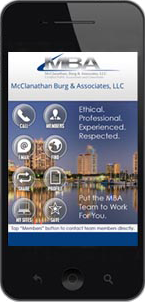How to Maximize Tax Breaks for Work-Related Education Costs

School is back in session. So, it’s time for a refresher on tax breaks for work-related education expenditures. Here’s what individual taxpayers need to know.
American Opportunity Credit
The American Opportunity credit equals 100% of the first $2,000 of qualified postsecondary education expenses plus 25% of the next $2,000 of qualified education costs (subject to certain income-based phaseouts). The maximum annual credit is $2,500, and it’s potentially available regardless of whether your classes are work-related.
Are You Self-Employed?
Self-employed individuals may be eligible to deduct qualified work-related education expenses on their business tax forms. Self-employeds don’t have to worry about the 2%-of-adjusted-gross-income limit for itemized deductions or the alternative minimum tax rules. But they should heed the warnings about undergraduate degrees and MBAs provided in the main article.
Qualified expenses include:
- Tuition,
- Mandatory enrollment fees, and
- Books and other course materials.
What costs are not eligible? You can’t claim the American Opportunity credit for the costs of student activities, athletics, health insurance, or room and board.
You’re ineligible for the American Opportunity credit if you’ve already completed four years of undergraduate college work as of the beginning of the tax year. You’re also ineligible for the credit if you’re married and don’t file jointly with your spouse. On a more favorable note, you can claim the credit for your own expenses and additional credits for your spouse and dependent children if they also have qualified expenses.
To qualify for this credit, you must attend an eligible institution. Fortunately, most accredited public, nonprofit, and for-profit postsecondary schools meet this definition, and some vocational schools do, too. The two main criteria are that 1) the school must offer programs that lead to a recognized undergraduate credential, such as Associate of Arts, Associate of Science, Bachelor of Science (BS) or Bachelor of Arts (BA), and 2) the school must qualify to participate in federal student aid programs. Additionally, the American Opportunity credit is allowed for only a year during which you carry at least half of a full-time load, for at least one academic period beginning in that year.
You do have to be a fairly serious student to be eligible for the credit, but you don’t have to go to school full time or actually intend to complete a degree or credential program.
Finally, the American Opportunity credit may be partially or completely phased out if your modified adjusted gross income (MAGI) is too high. For 2017, the MAGI phaseout ranges are:
- Between $80,000 and $90,000 for unmarried individuals, and
- Between $160,000 and $180,000 for married joint filers.
Lifetime Learning Credit
The Lifetime Learning credit equals 20% of up to $10,000 of qualified education expenses, with a maximum credit amount of $2,000. In addition to applying this credit to the costs of the first four years of full-time undergraduate study, you can use this credit to help offset costs:
- When you’re carrying a limited course load or after the first four years of undergraduate study (when the American Opportunity credit is unavailable),
- For part- or full-time graduate school coursework, or
- For miscellaneous courses to maintain or improve your job skills.
The credit is potentially available regardless of whether your classes are work-related. Only one Lifetime credit can be claimed on your return, even if you have several students in the family. You also can’t claim both the American Opportunity and Lifetime Learning credits for the same student for the same year. However, you can potentially claim the American Opportunity credit for one or more students and the Lifetime Learning credit for another.
The requirements for the Lifetime Learning credit are similar to the requirements for the American Opportunity credit. Qualified expenses are tuition, mandatory enrollment fees, and course supplies and materials (including books) that must be purchased directly from the school itself. Other expenses — including optional fees and room and board — are off limits.
In addition, the school you attend must be an eligible institution. If you are married and don’t file jointly with your spouse, you are ineligible for the Lifetime credit, and the credit is phased out if your modified adjusted gross income (MAGI) is too high. However, the ranges for the Lifetime credit are lower than for the American Opportunity credit, which means they’re more likely to affect you. For 2017, the MAGI phaseout ranges are:
- Between $56,000 and $66,000 for unmarried individuals, and
- Between $112,000 and $132,000 for married joint filers.
Employer-Provided Educational Assistance Plan
If you’re fortunate enough to work for a company that offers an educational assistance plan, you can potentially receive up to $5,250 in annual tax-free reimbursements for your education costs. These plans are also called Section 127 plans. The tax rules permit Sec. 127 plans to cover just about anything that constitutes education, including graduate coursework, regardless of whether it’s job-related. However, some plans only reimburse for education that is, in fact, job-related. That’s up to your employer.
There are only two restrictions under the tax rules:
1. The education must be for you, the employee, rather than a family member, and
2. The plan can’t pay for courses involving sports, games or hobbies unless they relate to company business.
Employer Reimbursements for Job-Related Education
Your employer can also give you an unlimited amount of tax-free reimbursements to cover qualified education expenses. In a nutshell, you have qualified expenses if the education:
1. Is required by your employer or by law or regulation in order for you to retain your current job, or
2. Maintains or improves skills required in your current job.
Qualified expenses don’t include the cost of education that sets you up for a new occupation or profession. If your employer pays for that kind of education, the payments count as taxable compensation — unless they’re run through a Sec. 127 educational assistance plan.
Deductions for Job-Related Education Costs
If your employer doesn’t provide any financial assistance, you still may be able to write off all or a portion of your qualified education expenses as a miscellaneous itemized deduction for unreimbursed employee business expenses. These expenses are combined with other miscellaneous itemized deduction items, such as union dues, investment expenses, and fees for tax preparation and advice. If the sum total of all your miscellaneous expense items exceeds 2% of your adjusted gross income (AGI), you can write off the excess.
The IRS says an undergraduate degree automatically prepares you for a new profession, so costs to obtain a BA or BS aren’t qualified education expenses, and you can’t deduct them. The IRS makes the same argument about Master of Business Administration (MBA) degrees, but several U.S. Tax Court decisions disagree. Those decisions say MBA costs are qualified expenses if the extra degree simply maintains or improves skills needed in your current job, which is often the case.
The IRS also says the cost of a law school degree can’t be deducted because law school prepares you for a new profession, even if you don’t actually intend to practice law.
Finally, the cost of any other advanced degree that prepares you for a new profession isn’t deductible. For instance, if you’ve been working as a car rental agency representative since you graduated with a BS in chemical engineering, you can’t deduct the cost of going back to school to obtain a master’s degree or doctorate in chemical engineering to prepare you to enter that field.
Unfortunately, under the current alternative minimum tax (AMT) rules, you get no write-off for miscellaneous itemized deduction items. So if you’re subject to AMT, you may be ineligible for any work-related education deductions.
Lessons Learned
The issue of tax breaks for education expenses can be confusing. There are multiple breaks with multiple sets of rules, and several breaks may potentially be available for the same expenses. Your tax professional can sort out the rules and advise you on how to get the most tax savings from your work-related education expenses.




